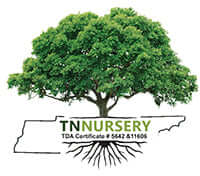
Hay scented perennial Ferns
Share
Hay Scented Fern
Natural habitat: Native to the eastern United States and Canada, its natural habitat includes dry woodlands, stony outcrops, fields, slopes, and road banks. The hay-scented fern grows in patches, making it ideal for naturalizing in mass plantings in cottage gardens and rocky areas.Soil and light: While it tolerates various conditions, it thrives in acidic and moist but well-drained sandy, silty, and clay soils. Since loam combines all three soil particle sizes, this fern grows very well in a loamy soil. It flourishes when the light ranges from partial shade to full sun. Hardiness: Optimum USDA Plant Hardiness Zones include 3-8. These beautiful plants are resistant to most insect pests and diseases and aren't considered tasty by deer or rabbits. Moreover, they don't suffer from coastal salt spray or moderate drought.
Life cycle: These are perennial plants that come up again each year
Because they're deciduous, they lose their fronds in winter but sprout fiddleheads (nonedible) every spring. Instead of flowering, they propagate themselves via spores and rhizomes. Rhizomes are underground stems that spread horizontally and grow roots. An attractive bright green during the warm months of May through August, hay-scented ferns turn soft golden yellow in the fall. Appearance: The stems are long, erect, and arching, growing one or two feet high, sometimes taller, and eventually reaching a width of three to four feet. Starting green, the stems later blush to a rich burgundy color. Imagine enjoying a solid ground cover of graceful ferns that add interest and style to sparse garden spots along fence lines and under trees.Suggestion: Need an idea for a unique and beautiful gift? Consider giving a decoratively wrapped pot of one or two low-maintenance hay-scented ferns to transplant and bring years of beauty.
We offer many healthy plants at low prices with fast nationwide shipping.
Add some of these easy-care hay scented ferns to your garden!
